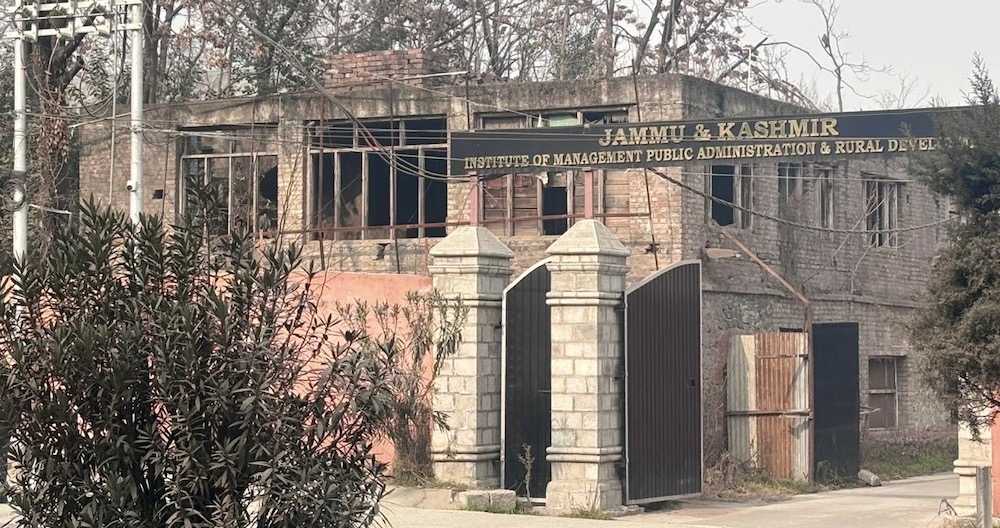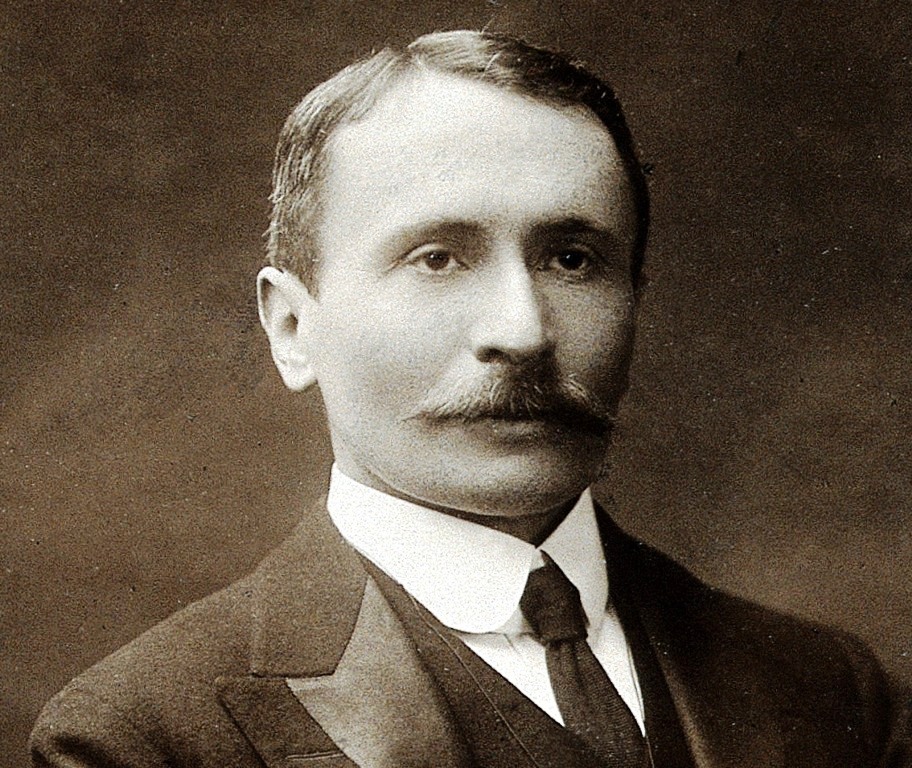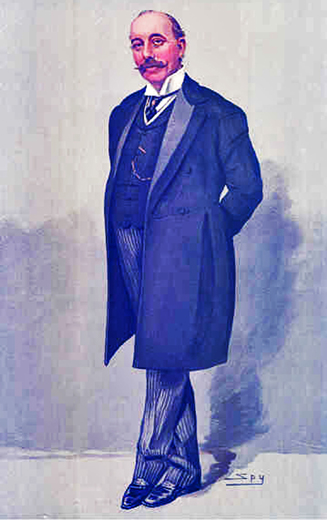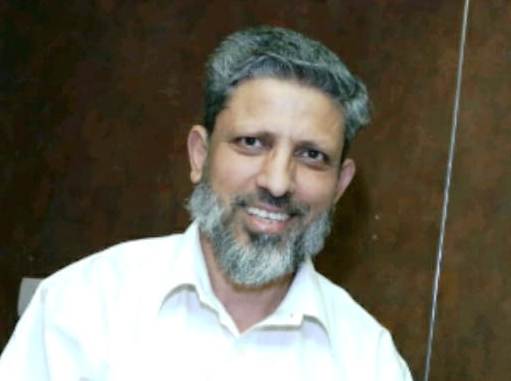by MJ Aslam
The contribution of Sir Walter Lawrence to Kashmir is prima facie far higher than that of Sir Marc Aurel Stein and he deserves equal respect and acknowledgement for his contribution to Kashmir by the government. Lawrence was the people’s man in Kashmir and perhaps the most famous Briton in Kashmir.

Sir Marc Aurel Stein (1862-1943) was an eminent Hungarian scholar, explorer, archaeologist and geographer. He is generally known to the Kashmiris and the world for his English translation of the twentieth-century metrical chronicle, Rajatarangini, “the stream of kings”, of Sanskrit poet, Pandit Kalhana, the court Kany (poet) and chronicler of Raja Jayasimha [1128-1155).
Dr Stein visited Kashmir first in August 1888 and then he continued his visits to Kashmir till his last year of age, 1943. In summers he would come and visit his beloved alpine meadow, Mahand Marg in Ganderbal where he would contemplate, think, read and write. As and when his duties allowed, he would pitch his tent and work at Mahand Marg and from his camp, almost the whole of Kashmir was spread before his eyes like a dreamland. The Mahand Marg meadow covered with foot-high flowers, blue and yellow, was looking like the most magnificent carpet in the world to him.

It was the Dogra Ruler who commissioned him for the translation of Kalhana’s chronicle. During his visits and stay in Kashmir regarding his translation of Rajatarangini and “Brahmanical version” of Kashmir’s geography, he had the company and “help” of well-known Pandit Sanskrit scholars of the time like Pandit Damodhar, Pandit Govind Koul (a close friend of Pandit Isvara Koula) and others who “came from morning to evening” to assist him at Mahand Marg where he was devoted to his Rajtarangini labours in the alpine seclusion of his cherished mountain camp. Pandit Govind Koul‘s “erudition was to be essential to the translation and editing of the Rajatangini”.
Mahand Marg site has been associated with the name of this great Hungarian man where he deliberated upon nature, read the manuscripts of Rajatarangini in the serenity of the mountainous meadow and also found time in the presence of Pandit Sanskrit scholar to translate folios of Sanskrit manuscripts. The Kashmir Tourism Department has recently raised a museum in his memory at Mahand Marg meadow of Ganderbal.
His Contemporary
Sir Walter Lawrence was Stein’s contemporary. After he was placed in the prestigious Indian Civil Service, he worked continuously for sixteen years from 1879 to 1895 without taking a break. From 1879 to 1889, he was appointed to several positions in Punjab, as Census Officer of Peshawar and Hazara and as Agent to the Government of Rajputana where he became a member of the Political department of the Government of India.
In 1884, he was Under Secretary to Sir Charles Aitchison, the Lt Governor of the Punjab, which included six months as Settlement Officer of Karnal and Ambala. He was Under Secretary to the Government of India under Sir Edward Buck from 1886-1888 in the Department of Land Revenue and Agriculture.
Lawrence was married to Lillian Gertrude on March 18, 1885, at Mount Abu, Rajputana (now Rajasthan). In 1888, he was offered by Lord Lansdowne, the Viceroy and the Governor General, three appointments of Under Secretary in the Foreign Department, First Assistant to Resident of Deccan at its capital Hyderabad and Settlement Officer of Kashmir. He chose Kashmir “as the land of his Indian dreams”. “The very name, Kashmir, compelled” him to opt for the third appointment.

His Kashmir Assignment
On April 12, 1889, thirty-two years old Lawrence set off for Kashmir from Shimla along with his family with the appointment as lacum tenens of Andrew Wingate. He was in Srinagar on April 26, 1889. He completed the settlement work in September 1894 and returned to England in March 1895. He was fondly called, “Larren Sahab” by Kashmiris.
After retirement, he got more opportunities to work as Private Secretary to Lord Curzon (1899- 1903) and then as Commissioner for the welfare of the sick and wounded Indian soldiers of WWI in England and France from 1914 to 1916. He ensured the Muslim, and the Hindu and the Sikh soldiers who had lost their lives in WWI, were decently buried and cremated, respectively, in England according to their religious rites. He worked with local Molvis in England for the Muslim soldiers’ burials in Wokingham and likewise, he worked with Hindu and Sikh priests for the cremation of Hindu and Sikh soldiers at Chattri, South Downs. This was the standard of his humanity.
After retirement, he travelled to several countries like Syria and Palestine in 1919 and he was in the USA in 1917 and1918 with a British delegation. After WWI, he lived with his son, Henry Walter Neville Lawrence, and his family, and died at the age of 83 on May 25, 1940.
A Debt on Kashmir
Kashmiris owe Lawrence a great debt of gratitude for completing the pioneering work of permanent land settlement. He also recorded firsthand observations about the condition of Kashmir, its people, culture, language, water bodies, festivals, mountains, food, dress, habits, flora and fauna, and whatnot, in his monumental work, Valley of Kashmir, which was first published in London in 1895.

Besides, Lawrence wrote several articles for newspapers. It is well described that: “Perhaps no foreigner had greater opportunities of studying the character of the people of Kashmir than the late Sir Walter Lawrence, who was for [six] years the Settlement Commissioner of the State, and in that exceptionally advantageous capacity amassed highly useful information, which he utilised later in his famous and authoritative work, called the Valley of Kashmir. In this book, he deals at great length with the character of Kashmiris”.
“He was one of the elder statesmen, always called in or consulted when Indian affairs were under consideration, the trusted counsellor of ministers and of all who sought guidance on India”.
His second book, India We Served, a memoir, is also of great value for understanding the culture and traditions of old India. “He gathered up his experiences” in this book which was published in 1928 and “which is stamped with the mellow wisdom and generous appreciation of India and its peoples so characteristic of all his service”.
Historical Site
The office building (Bandobasti Imarat) where Sir Walter Lawrence worked for completing settlement work of Kashmir was located between the alley leading to S P Higher Secondary School and (Holy family) Catholic Church, on Srinagar’s now Moulana Azad Road (the erstwhile Hotel Road).
The building which was used by him for the completion of the gigantic work concerning the land settlement (Bandobast i Qaooni), was called the Settlement Department, which held in its compound a big statue of Sir Walter Lawrence in Maharaja Hari Singh’s reign. The Settlement Department became later popular as Mahafiz-Khana, holding the land and survey records of Kashmir from the Lawrence time.
The settlement building still exists as of date but in utterly dilapidated condition just on the left side of the entry gate to the modern-day Jammu and Kashmir Institute of Management, Public Administration and Rural Development (IMPARD), M A Road, Srinagar. In 1986, when IMPARD was set up, it was housed initially in an old building, which was reminiscent of the British-Dogra architecture in Kashmir, just behind the Catholic Church on MA Road, Srinagar. Was that building residential Kothi of Sir Walter Lawrence?
Well, the Mahafiz-Khana, which also housed the erstwhile State Human Rights Commission for some time after its creation in 1997, was shifted to a new building at the Directorate of Land Records, Bemina Srinagar, probably in 1998-1999.
Maharaja’s Friend
Sir Walter Lawrence was a “good and constant friend from 1889” of the Maharaja Pratap Singh and after he left India, the two “maintained a regular correspondence”. Sadly, the “historic building“ in which he worked and completed the gigantic operations of the land settlement was not preserved by the governments of the time.
On recorded evidence, the statute of Sir Lawrence which existed in the compound of the settlement building even in Maharaja Hari Singh’s time was demolished but, which hands did it and when they did it, it cannot be precisely said. He was a friend of all but few considered him inimical to their age-old hegemonic exploitation.
This author was told by several witnesses that there were several buildings within the precincts of IMPARD till recent times which were once used by the officials of the Forest Department, Home Science and the Settlement Staff. Nothing of them exists now. The new infrastructural structure of IMPA has come up over the years in their place. There is not a single monument or government building in the area under discussion dedicated to the memory of Sir Walter Lawrence.
No Memory
Some of the concerned officials of the Revenue and Land Records departments, whom this author met were clueless about the historical significance of the site and the existence of Sir Lawrence’s settlement building and statute in its compound. The old dilapidated building with a compound stands and urgently calls for the attention of the concerned authorities in Kashmir.

To recall, Stein spent several summers from 1888 till the completion of the English translation of Pandit Kalhana’s Rajtarangini in the alpine meadows of Mahand Marg Ganderbal. He used to camp in the open meadows in the company of Kashmiri Brahman scholars during the years he was working on the translation work of the Rajtarangini. Recently the Tourism Department Kashmir has raised a museum in his memory in the forest meadows at Mahand Marg Ganderbal.
The contribution of Sir Walter Lawrence to Kashmir is prima facie far higher than that of Sir Marc Aurel Stein and he deserves equal respect and acknowledgement for his contribution to Kashmir by the government. Lawrence was the people’s man in Kashmir and perhaps the most famous Briton in Kashmir.
It is suggested that the departments of Tourism, Land Records, INTAC-Kashmir, and Financial Commissioner, should rise to the occasion and take necessary steps for converting the old Mahafiz-Khana building at M A Road, Srinagar, to a monument in loving memory of Sir Walter Roper Lawrence.
(MJ Aslam is a historian and author. Ideas are personal).
The post Why Cannot the Erstwhile Mahfiz Khana Be Dedicated to Walter Lawrence’s Memory? appeared first on Kashmir Life.
from Kashmir Life https://ift.tt/fUQ1aRn
via IFTTThttps://ift.tt/txghkGj
No comments:
Post a Comment